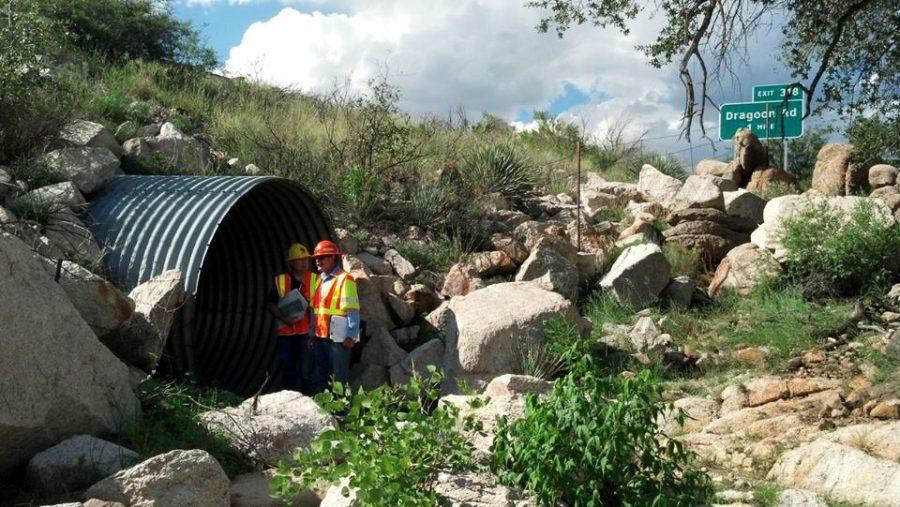The Arizona Department of Transportation recently adopted a UA alumna’s master’s project to help wildlife species safely cross Interstate 10.
Sara Sillars worked on wildlife linkages in the Cochise County area as part of her master’s project, which has since been adopted by ADOT. Wildlife linkages are pathways that wildlife species use to move between living places.
Sillars earned her degree from the UA’s Master of Science and Geographic Information Systems Technology program in May, while interning with Sky Island Alliance, an organization that works to protect native species and habitats in the Southwestern U.S. and northwestern Mexico.
ADOT put forth a plan to widen the I-10 between the Dragoon and Galiuro mountain ranges by 60 feet in order to accommodate heavy traffic flow. ADOT then brought its concerns regarding wildlife species in the area to the public, and that’s when Sky Island Alliance jumped on board the project to provide its thoughts, said Jessica Moreno, the wildlife linkages program coordinator for Sky Island Alliance.
One problem is that the I-10 acts as a barrier for wildlife movement because the roads fragment the places where the species live, according to Sergio Avila, a program manager for the Northern Mexico Conservation Program with Sky Island Alliance.
This provided Sillars with the opportunity to research and analyze the vulnerable wildlife and habitats surrounding the area, which became the subject of her master’s project. Her project gathered valuable information that ADOT can use in formulating its plan, which is still in its early stages, according to Moreno.
Sillars’ project is expected to benefit the state in a variety of ways.
“Her thesis project has tangibly helped bring focus to the importance of the wildlife linkage in the Texas Canyon area, provided science-based information to develop sound strategies to address wildlife connectivity and ultimately will help promote population viability and reduced highway mortality for a host of wildlife species,” said Ryan Harding, public information officer for ADOT, in an email interview.
Sillars’ project aims to improve culverts, which are underpasses that can be widened to provide a passageway for animals like deer and javelinas. Otherwise, if the road was expanded, the animals would balk at passing through the long, dark holes of the culverts. Overpasses are also a possible solution, since underpasses are more specific to certain species, according to Moreno.
“I hope that it actually comes to fruition and that there’s a corridor [passageway] put in place,” Sillars said.
Sillars said the goal of her project was to see what types of species would use which crossing structures, and at what locations.
ADOT chose one of her suggested locations as a place to study further.
“This is a way to make sure that our wildlife stays healthy,” Moreno said. “[Sillars is] helping us do our mission to protect wildlife in the region, but she’s doing it in a way that’s going to help protect people on the road, and it’s very collaborative.”









